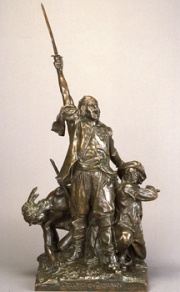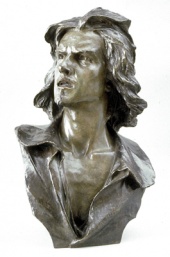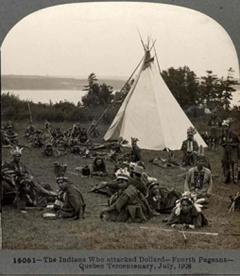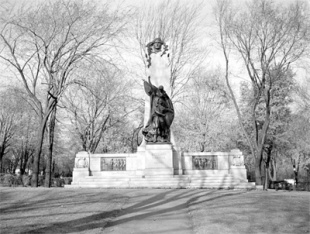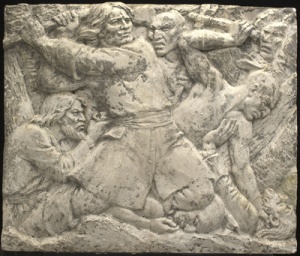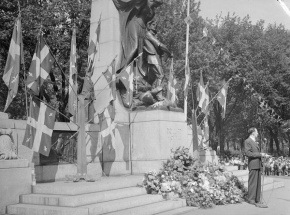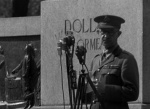Dollard des Ormeaux
par Groulx, Patrice
Adam Dollard des Ormeaux, an emblematic figure representative the history of New France, was long the object of extraordinary patriotic fervor. The battle that he waged with a handful of comrades against an entire Iroquois army in 1660 left its mark on the collective memory. The festivities in honour of his "Long Sault exploit" reached its peak during the 1920-70 period and was celebrated in many ways, most notably the Fête de Dollard celebrated every year in Quebec on the same date as Victoria Day in the rest of Canada. Nevertheless, since 2003, this celebration has been replaced by National Patriots' Day, a clear indication that this figure and his heroic feats no longer have the same widespread significance. One day, the question may arise as to what extent Dollard des Ormeaux is still part of French cultural heritage in North America.
Article disponible en français : Dollard des Ormeaux
From Historical Event to Popular Legend
Dollard des Ormeaux and the Battle of Long Sault are an ever present part of French-Canadian culture, particularly in Québec. Monuments and historical plaques have been erected to commemorate a battle that is supposed to have saved New France from an Iroquois invasion. Until the 1960s, Dollard and his struggle were prominently featured in all French-language history textbooks and the legendary figure and his exploits are still commemorated in place names, history texts, dictionaries and websites today.
The event of which legend tells the tale is a battle that took place in May 1660 at the foot of Long Sault, a series of rapids on the Ottawa River, not far from Montreal. The battle pitted 600 to 800 Iroquois warriors against a troop of 40 Hurons living in Quebec City, 4 Algonquins from Trois-Rivières, and 17 Frenchmen from Ville-Marie (Montreal). The initial objective of Dollard's troop was to ambush small, isolated groups of Iroquois as they returned from their winter hunting grounds. By a stroke of bad luck, they found themselves confronted by a much larger group that had been sent to attack New France. Dollard and his companions took refuge behind a tiny, abandoned Algonquin stockade and, after a bloody siege, were overwhelmed by their enemies who then returned to their villages with their prisoners. Not a single Frenchman came back alive from the expedition, and all the Hurons and Algonquins were captured. A few of the latter subsequently escaped and brought news of the event to Montreal and Quebec City.
In those days, such a powerful force of Iroquois was entirely unexpected, and so the death of the Frenchmen and their allies was immediately interpreted by civil and religious authorities as a sacrifice that had saved the colony from being invaded. The event was included in reports sent to France. However, even though this episode caused a momentary stir, historical accounts gathered from 1660 to 1700 show that it had already been forgotten within a generation.
The first French-Canadian historians dug accounts of this event out of the archives during the 1840s. The socio-political context of the period-particularly the crushing of the Patriot Movement, more specifically the Lower Canada Rebellion (1837-38), and the legislative union imposed by London, in order to gain tighter control of the French-speaking majority-sparked a sort of identity crisis. Educated nationalists re-wrote historical accounts, emphasizing the courage of the French settlers who fought against their enemies, first the Iroquois and then the British. The Battle of Long Sault and Dollard des Ormeaux made an initial although limited appearance in François-Xavier Garneau's History of Canada written in 1845.
Subsequently, the event was given increasing prominence in historical writings, especially those produced by members of the clergy. As penned in 1865 by the Sulpician Étienne-Michel Faillon, the account of Dollard's exploits took on legendary proportions. They may be briefly set forth in the following manner: Having gotten wind of the Iroquois' intention to wipe out the French colony through a sudden invasion, Dollard and his 16 comrades sallied forth to meet them so as to hold them at Long Sault and to terrorize them by fighting valiantly until the bitter end. In the same breath, Faillon writes derogatorily of Dollard's Huron allies whom he accused of having betrayed the French. A few years later, the American historian Francis Parkman, who deliberately adopts an epic tone, also celebrates Dollard's exploits in an account that was widely distributed in English Canada. Thereafter, in French and English, the legend of Dollard was used to depict just how difficult it had been to establish Christian civilization in the midst of pagan barbarism. French-speaking writers, however, went a step further, enhancing the religious undertones of their accounts.
A Comprehensive Device for Commemorating a Historical Event
By singling out this battle as one of the main military feats in the history of New France, Abbot Faillon met one of the requirements for commemoration. Leaders of Quebec's nationalist movement integrated elements from Dollard and his battle into the Société Saint-Jean-Baptiste parades held in Quebec City (1880) and in Montréal (1884). The event is depicted with increasing frequency in historical prints and images and became a popular composition theme in the fine arts and humanities. In 1895, Dollard was immortalized in the bronze bas relief of a monument built in honour of Montreal's founder, Paul Chomedey de Maisonneuve. In 1908, he (Dollard) was the theme of one of the large-scale historical pageants marking Quebec City's 300th anniversary celebrations.
The 250th anniversary celebration of the battle, held in Montreal in 1910, marked a turning point for the holiday and the event it commemorated. Stung by remarks published in an English-language daily, the Montreal Herald, which pointed out the prevailing public indifference regarding the holiday, the French-speaking elite organized a major demonstration supported by the Catholic clergy and the Quebec government. It was decided that a fund-raising campaign would be undertaken to raise money in order to erect a Dollard monument.
Over the next decade, the scene was set and the prinicipal players for the commemoration were chosen. The Victoria Day public holiday in May offered a golden opportunity to highlight the anniversary of the battle. Catholic lecturers and journalists exhorted young people to resist materialist values and American influence by following the example of Dollard. Standing before a group of Montreal students in 1919, Father Lionel Groulx delivered a famous lecture on the subject, entitled "If Dollard returned today...," accounts of which was distributed in colleges and seminaries across Quebec. The commemoration of the hero became official with the formal dedication of two monuments. The first was in 1919, in Carillon (where the battle supposedly occurred), and more importantly, the second took place in 1920, in Montreal's Lafontaine Park.
From this time until the 1960s, the Fête de Dollard was celebrated in Montreal every year at the foot of the monument. It was also commemorated in a great many towns and villages throughout Quebec, as well as in Franco-Quebec communities across Canada and New England. Public enthusiasm for Dollard Day waxed and waned, but, from this time on, the holiday would be irrevocably linked with Victoria Day.
The holiday was celebrated in various manners, including military vigils, commemorative masses, patriotic speeches and parades. It was often accompanied by the publication of editorials, lectures, and strongly evocative printed images rooted in popular culture. Thus, for about half a century, young French speakers were reminded of their duty to follow the example of Dollard in the struggle to protect the religious, social and political values of the French-Canadian people.
Criticism and the Decline of the Legend
At the beginning of the 1930s, the popularity of the legend had reached its height and seemed unassailable. It was not however invulnerable to informed criticism. In 1932, a historian from McGill University, Edward Reginald Adair, delivered a lecture and published an article reconstructing the Battle of Long Sault. His paper, which discredited the notion of the voluntary sacrifice of Dollard and his men, proposed to relegate the tale to the archive of historical legends, thereby triggering a flood of protest. Nonetheless, the analysis caused the commemorative structure to crack.
The intellectual debates that emerged in French Canada during the economic crisis of the 1930s, accompanied by intense social and political upheaval during the Second World War, produced a renewed set of cultural references. Borne up by the most conservative ideals of the social elite, the legend of the heroic Dollard had all sorts of trouble withstanding the winds of change. Growing concern for analytical thoroughness and historical accuracy clashed with the dogmatic construction of cultural identity to such an extent that, as of 1945, Léo-Paul Desrosier, a friend and disciple of Father Groulx, challenged entire chapters of the Dollard legend in his writings. During the 1950s, writer Jacques Ferron takes his turn at denouncing clerical conservatism by criticizing Dollard, all the while proposing the 1837-38 patriots as a substitute.
On the occasion of the tricentennial celebration of the Battle of Long Sault in May 1960, Father Groulx responded to the criticisms that had been stacking up against him by publishing a leaflet entitled "Dollard est-il un mythe?" [Is Dollard a legend?]. The annual Dollard Day event in Montreal was disrupted by a small group of socialists who condemed Dollard, historical falsehoods, Victoria Day and Canadian colonialism in a wholesale manner. A few weeks later, the Liberal Party took power and set in motion the sweeping reforms of the Quiet Revolution. The convergence of these events was no coincidence, since, at this time, Quebec was beginning to openly challenge the traditional social, political, economic, cultural and ideological structures. From this time on, the annual celebrations at the Dollard des Ormeaux Monument would be the target of sovereignist demonstrations claiming to draw inspiration from the emancipating struggle of the patriots.
Then, in 1966, these repeated thrusts reached their objective. A bomb blast, for which no one claimed responsibility, shook the Dollard des Ormeaux Monument just before what would turn out to be the last annual celebration for many years. That same year, the historian André Vachon published a detailed analysis of the historical foundations of the legend in the first volume of the Dictionary of Canadian Biography. And so, history analysed, criticised, documented and revised took the honoured place of a collective memory.
Nevertheless, the legend didn't entirely disappear from the French-Canadian consciousness, for the essence of a historical legend is that it is anchored both in the real past and in the present of its interpreters. Since Dollard belongs to the history of New France, his story continues to give an account of the origins of French Canada and Quebec that was forged through resistance to a hostile environment. However, as of 1960, other heroes drawn from the region's founding era came to better represent the aspirations of the rising elite and of the public in general. Jacques Cartier and Samuel de Champlain, for example, would henceforth epitomize the spirit of exploration and the commercial and military genius of the founding fathers, whereas Dollard, a shadowy historical figure (even his age and birthplace remain unknown) did not have the capacity to adapt and evolve to keep pace with social change.
A Place of Shared Memory Constructed of Vestiges of Historical Facts
It is the accounts of Dollard's contemporaries alone, which claim that the battle saved the colony from a massive attack by the Iroquois, that offer the slightest measure of credibility to the idea that at the 1660 event in Long Sault was of any historic importance. But the legend owes its survival to other factors besides these historical testimonies. Its longevity is also paradoxically founded on the longstanding tradition of the collective memory of Dollard and the criticism it received-both elements which occupy an important place in French-Canadian history. From this perspective, Dollard des Ormeaux is a Realm of Shared Memory, which Pierre Nora defines as a memory invested with significance.(NOTE 1) Ever since 1966, the account of Battle of Long Sault has constantly undergone reinvention, remerging as the setting of works of fiction, the subject of analysis, and the cause for new celebrations held at the foot of the Dollard Monument in Montreal.
To what extent does the Legend of Dollard des Ormeaux merit remaining a part of the French cultural heritage of North America to be passed on to future generations? The patriotic fervour that made the legend so important is clearly dying out. It would seem that such fervour could only be revived in the context of a clash of identities, such as indeed occurred during a 1990 celebration. The celebration was the first to have been held at Montreal's Dollard Monument for a good many years and it was organized by a nationalist group in the midst of the Meech Lake and Oka crises. Such heritage inspired overtones have kept alive attitudes of supposed White racial and cultural superiority over Natives for far too long to merit any tolerance for their preservation.
What's left is the material heritage made up of archival documents, illustrations and commemorative objects kept in museums, along with several public monuments. This heritage constitutes a documentary resource and a confirmed account of the French-Canadian collective memory. Furthermore, it represents a cultural richness that deserves to be preserved and collectively transmitted, so long as it helps us understand the cultural and historic significance that Dollard des Ormeaux and the Battle of Long Sault took on over the course of 19th and 20th century of French-Canadian history.
Patrice Groulx
Laval University
NOTES
Note 1: "A Realm of Shared Memory, which implies any signficant entity, whether material or non material, which, through the collective will of human beings or the cumulative effect of time has become a symbolic element of the shared memorial heritage of a given community." Pierre Nora (ed.), Realms of memory: rethinking the French past, Columbia University Press, 1996, p. xvii.) [Original citation translated into English]
BIBLIOGRAPHY
Groulx, Lionel, « Si Dollard revenait... », Dix ans d'action française, Montréal, Bibliothèque de l'Action française, 1926 (1919), p. 88-122.
Groulx, Lionel, Dollard est-il un mythe?, Montréal, Fides, 1960, 59 p.
Groulx, Patrice, Pièges de la mémoire : Dollard des Ormeaux, les Amérindiens et nous, Hull, Éditions Vents d'Ouest, 1998, 436 p.
Pouliot, Adrien, et Silvio Dumas, L'exploit du Long-Sault : Les témoignages des contemporains, Québec, Société historique de Québec, 1960, 138 p.
Vachon, André, « Dollard des Ormeaux, Adam », Dictionnaire biographique du Canada, Tome I, Québec, Presses de l'Université Laval, 1966, p. 274-283.
Additional DocumentsSome documents require an additional plugin to be consulted
Images
-
 « Canadiens suivez l'
« Canadiens suivez l'
exemple de Doll... -
 Dollard des Ormeaux a
Dollard des Ormeaux a
nd His French C... -
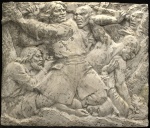 Dollard des Ormeaux,
Dollard des Ormeaux,
1929? -
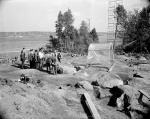 Fouilles archéologiqu
Fouilles archéologiqu
es.1961
-
La bataille du long s
ault -
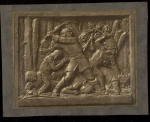 Le Combat de Dollard
Le Combat de Dollard
au Long-Sault. ... -
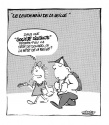 Le lendemain de la ve
Le lendemain de la ve
ille -
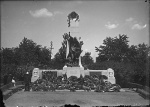 Monument à Dollar des
Monument à Dollar des
Ormeaux. Montr...
-
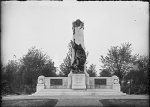 Monument à Dollar des
Monument à Dollar des
Ormeaux. Montr... -
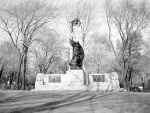 Monument Dollard des
Monument Dollard des
Ormeaux -
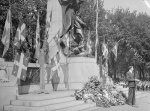 News. Fête de Dollard
News. Fête de Dollard
-
 The Indians Who attac
The Indians Who attac
ked Dollard- Fo...
Vidéo
Documents PDF
-
 Description de la fête de la Journée de Dollard de 1919
Description de la fête de la Journée de Dollard de 1919
-
 Description du monument de Dollard publiée dans le journal Le Canada, 25 juin 1920
Description du monument de Dollard publiée dans le journal Le Canada, 25 juin 1920
-
 Monument de Dollard à Carillon
Monument de Dollard à Carillon
-
 Nouvelle défaite de Dollard
Nouvelle défaite de Dollard
-
 Nouvelle défaite de Dollard
Nouvelle défaite de Dollard
-
 Un éclatant tribut à la mémoire de Dollard et de ses compagnons
Un éclatant tribut à la mémoire de Dollard et de ses compagnons

